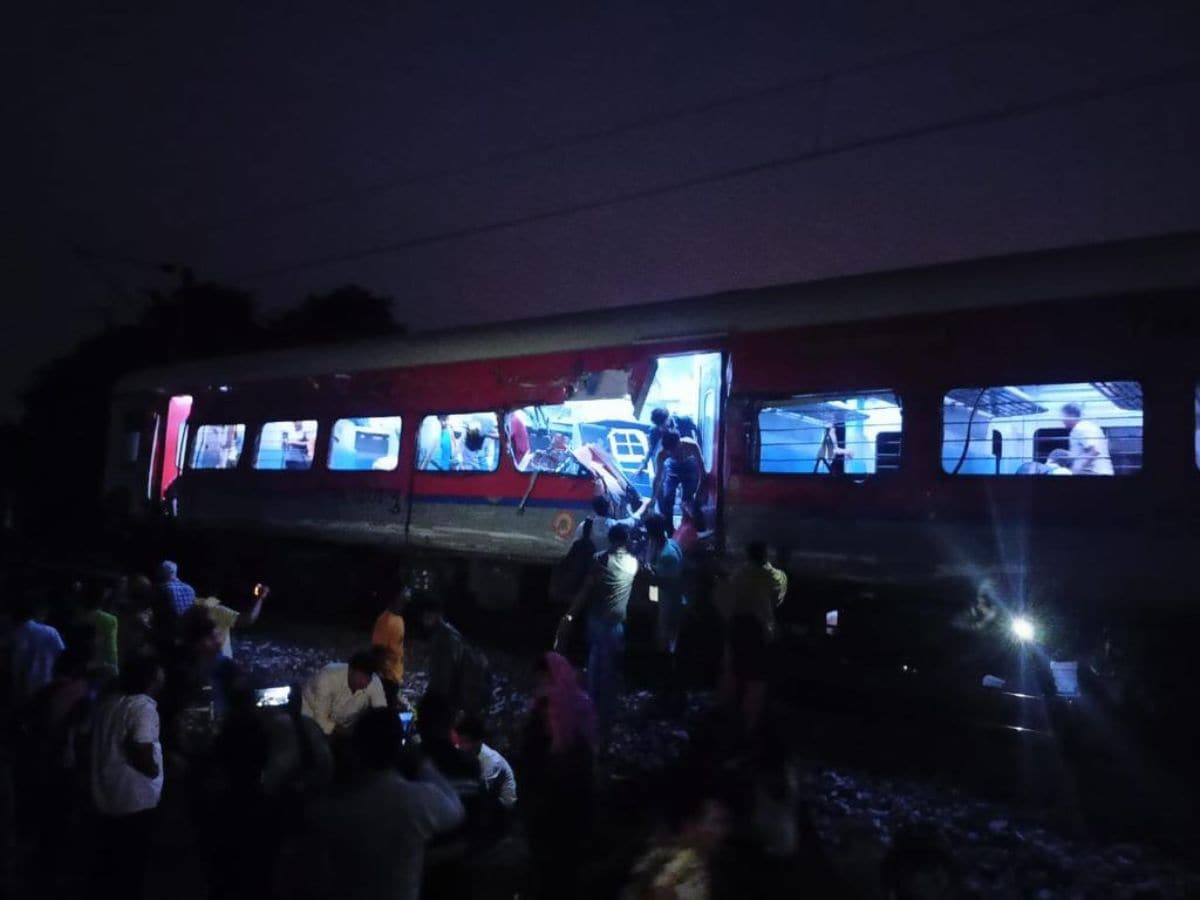Coromandel Express Tragedy: Railway Probe Points to ‘Mistaken’ Signal as Cause of Goods Train Collision. A preliminary investigation conducted by senior railway officials suggests that a ‘mistaken’ signal was likely responsible for the collision between the Coromandel Express and a parked goods train in Balasore, Odisha. This tragic incident, which claimed the lives of 290 individuals and left 900 injured, occurred due to the Coromandel Express entering the line where the goods train was stationed just meters ahead. According to the report, the section of track where the collision took place was found to be partially corroded.)
The report, obtained by HT, reveals that the Chennai-bound Coromandel Express, traveling from Howrah, mistakenly entered the loop line near the Bahanaga Bazar railway station in Balasore at approximately 7 PM on Friday. The erroneous signal, which was promptly withdrawn, led to the fateful encounter between the two trains.
Coromandel Express Tragedy: ‘Mistaken’ Signal Blamed for Fatal Collision with Goods Train
The document, signed by four senior railway officials who inspected the accident site on Friday night, explains that the signal was initially given and then removed for the main line intended for the Coromandel Express (train number 12841). However, the train inadvertently entered the loop line, colliding with the goods train and causing its derailment.
Loop lines are additional railway tracks that branch off from the main line and subsequently rejoin it at a greater distance. They serve as service lanes, allowing trains to make stops or overtake maneuvers without disrupting other train traffic.
The comprehensive two-page handwritten report, compiled by senior railway subordinates JN Subudhi, RK Banerjee, RK Panjira, and AK Mohantu, was submitted on Saturday.
It is important to note that the precise cause of the accident will only be determined after a detailed technical inquiry conducted by the commissioner of railway safety. In response to the incident, the Union railway ministry has initiated a high-level probe to investigate the root cause of the tragedy.
The report draws its conclusions from observations and records obtained from the signal room at Bahanagar Bazar railway station.
Additionally, the report mentions that during the incident, the Bengaluru-Superfast Express (train number 12864) passed through a separate line, resulting in the derailment and overturning of two of its coaches.
According to the two-page report, 21 coaches of the Coromandel Express and two coaches of the Bengaluru-Superfast Express were derailed. It is worth noting that the impact on the sleeper coaches of both trains was relatively less severe compared to the air-conditioned coaches.
Furthermore, the railway line in question is not equipped with the Kavach anti-collision mechanism employed by the railways, which automatically triggers the brakes if another train is detected on the same line.
Union Railways Minister Ashwini Vaishnaw expressed his commitment to preventing such accidents from occurring in the future. “We will ensure that such tragedies are averted,” he stated.
In a preliminary investigation conducted by senior railway officials, it has been revealed that a ‘mistaken’ signal was likely the cause of the collision between the Coromandel Express and a stationary goods train in Balasore, Odisha. This devastating incident claimed the lives of 290 people and left 900 injured. The report further highlights that the section of track where the two express collided was found to be partially corroded, raising concerns about the infrastructure’s maintenance.
According to the report obtained by HT, the Howrah-Chennai Coromandel Express, while traveling from Howrah to Chennai, entered the loop line near the Bahanaga Bazar railway station in Balasore around 7 PM on Friday due to a ‘mistaken’ signal. Fortunately, the signal was quickly withdrawn after the mistake was realized. However, the ill-fated entry onto the loop line set the stage for the collision between the Coromandel Express and the parked goods train just a few meters ahead.
Coromandel Express Tragedy: ‘Mistaken’ Signal Blamed for Devastating Collision
The report, signed by four senior railway officials who inspected the accident site on Friday night, highlights that the signal was initially given and then withdrawn for the main line intended for the Coromandel Express (train number 12841). Unfortunately, the train mistakenly entered the loop line and crashed into the goods train, leading to its derailment.
Loop lines are auxiliary tracks designed to divert trains from the main line and then rejoin it at a later point, providing a means for trains to make stoppages or execute overtaking maneuvers without disrupting the flow of other express.
The comprehensive two-page report, handwritten by senior railway subordinates JN Subudhi, RK Banerjee, RK Panjira, and AK Mohantu, was submitted on Saturday, shedding initial light on the events surrounding the tragic collision.
However, it is important to emphasize that the precise cause of the accident can only be determined following a thorough technical inquiry conducted by the commissioner of railway safety. Taking the severity of the incident into account, the Union railway ministry has already initiated a high-level investigation to uncover the underlying causes.
The report’s findings were based on careful observations and records obtained from the signal room at the Bahanagar Bazar railway station, offering valuable insights into the sequence of events leading up to the collision.
Additionally, the report notes that, simultaneously, the Bangalore-Howrah Superfast Express (train number 12864) passed through a different line, resulting in two of its coaches derailing and toppling over.
The two-page report highlights that 21 coaches of the Coromandel Express and two coaches of the Bangalore-Howrah Superfast Express were derailed as a result of the collision. Notably, the impact on the sleeper coaches of both trains was comparatively less severe than on the air-conditioned coaches.
Furthermore, it is worth mentioning that the railway line in question does not benefit from the railways’ anti-collision mechanism, known as ‘Kavach,’ which automatically activates the brakes if another train is detected on the same line. This raises concerns about the safety measures in place on the affected track.

















































